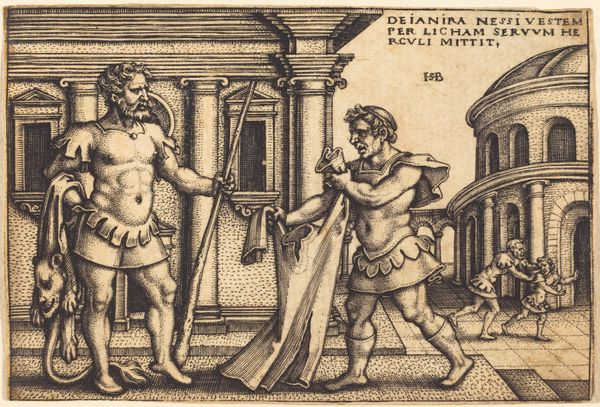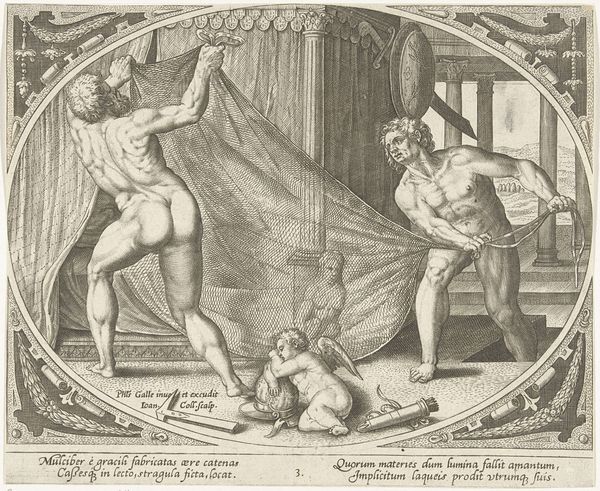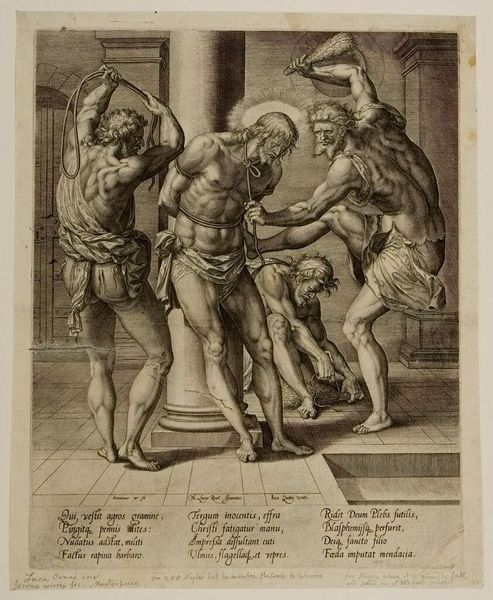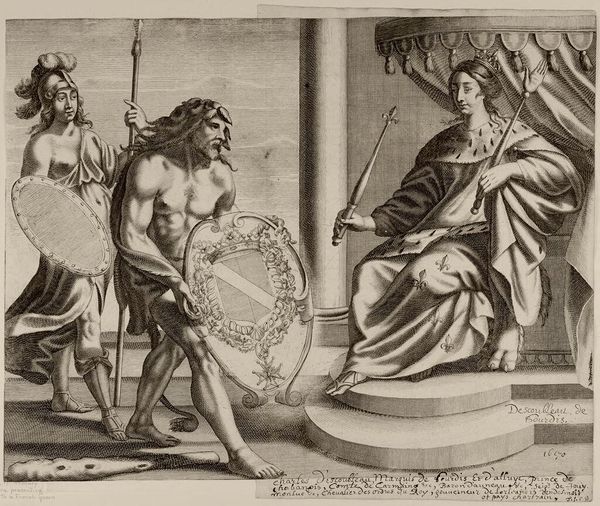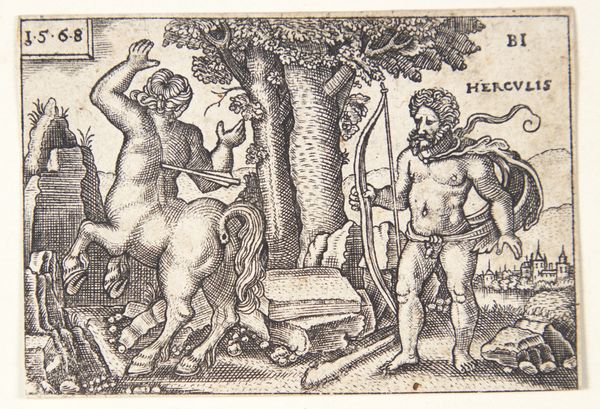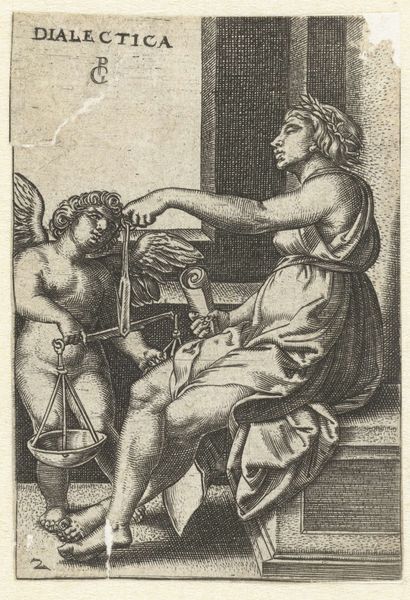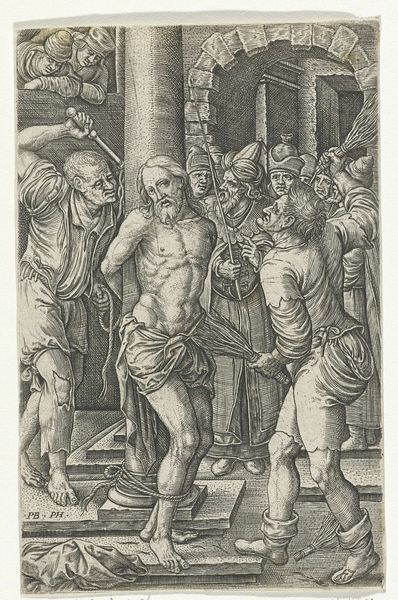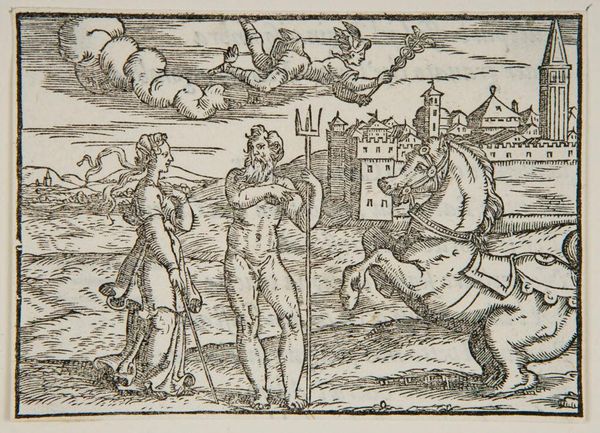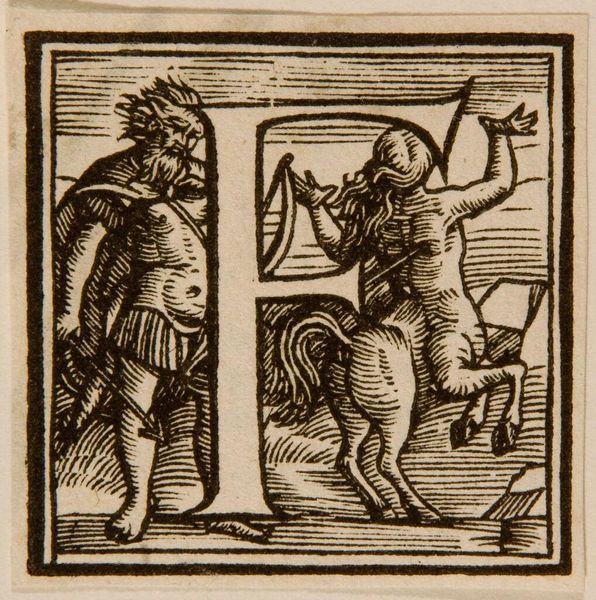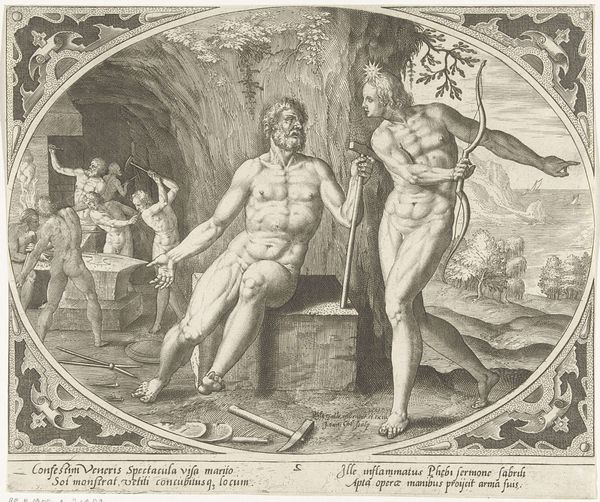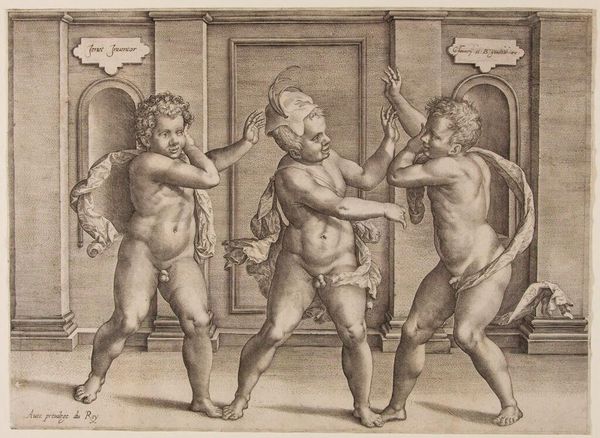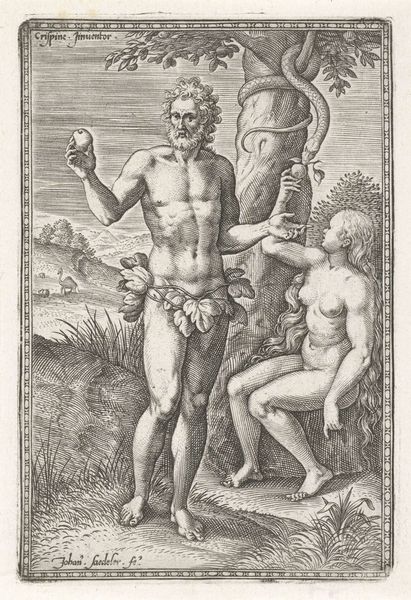
Hercules Receives from Deianeira a Garment Steeped in the Blood of Nessus c. 16th century
0:00
0:00
Copyright: CC0 1.0
Curator: This print by Sebald Beham, created around the mid-16th century, is titled "Hercules Receives from Deianeira a Garment Steeped in the Blood of Nessus." Editor: The scene has such a contained, almost stifling quality, doesn't it? The tight linework and the characters pushed into the foreground give it a really intense, dramatic feel. Curator: Absolutely. Beham's work often engages with themes of power, deception, and the tragic consequences of flawed masculinity. Here, we see Hercules unknowingly accepting a poisoned robe from a messenger, a gift from his wife Deianeira, meant to restore his love but tragically tainted. Editor: The lion skin draped over Hercules is such a potent symbol, right? It speaks to his strength and heroic identity, but it also becomes a visual marker of his vulnerability in this moment of betrayal. It underscores the irony—his strength ultimately undone by an act of supposed love. Curator: Precisely. And it’s crucial to consider the gender dynamics at play here. Deianeira's actions, motivated by jealousy and fear of losing her husband, highlight the limited agency afforded to women in this narrative. She is both a victim and an agent of destruction. Editor: Right, it feels like a commentary on how perceived love and loyalty can become fatally corrupted, almost echoing a kind of Freudian drama. Curator: Indeed. Beham’s print resonates with enduring social anxieties regarding gender roles and the destructive potential of unchecked power and misinformation, even today. Editor: Thinking about these symbolic layers adds even more depth to an already fascinating image, don't you think?
Comments
No comments
Be the first to comment and join the conversation on the ultimate creative platform.
